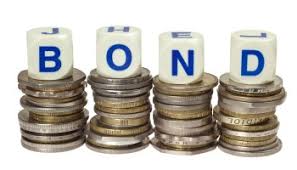The 2016 Presidential campaign in the Republic of Ghana was marked by diverse issues that all through the process captured the attention of the over 18 million voters across the nation.
Probably the most significant of those concerns was the impending power crisis in the country. While the opposition and now ruling party’s bells kept banging: economy!!! One could not avoid the sheer reality that the country’s economic performance could be no better than the availability of power supply across its lands.
The thought of tens of thousands of small businesses that provided direct and indirect employment to millions of Ghanaians provided solid rhetoric for an opposition band anyway on earth.
More so to the general public, there were perhaps only two or less causes to the problem: bad energy policies and non-cooperation from the neighboring Nigeria in supplying adequate gas to power turbines nation-wide. Quite a simple conclusion to draw on such an important issue.
However, the roots to Ghana’s energy crisis runs deeper than just the willingness or vice versa of a partner, or straight-jacket policies that have delivered inadequate power to the millions of homes, offices and factories across the country.
The issue is as a matter of fact deeply rooted in a power sector whose accumulated debt over the last ten years has almost choked its minimum level of efficiency.
According to a release by the Bank of Ghana on Friday 26th May, 017, Ghana’s current energy legacy debt stands at an estimated US$2.5 billion or Ghc10 billion (an amount which includes refinancing of existing structured debt due banks that is currently being repaid using a portion of the ESLA receivables) and serves as the most significant challenge to the President Akufo – Addo led government’s commitment to make power crisis a thing of the past by the end of its tenure.
Even more critical is the fact that, the country is set to see an outburst of small and medium scale factories if its famous industrialization and mass employment initiative known as the one-district-one factory is to be effectively implemented: majority of which will depend on the public’s energy source to meet at least 60% of their power needs.
Now in a decisive but highly risky move to resolve that issue, the Ministry of Finance in collaboration with the Bank of Ghana is issue a Ghc10 billion energy bond to the public.
As preliminary arrangement for the bond issuance, the Ministry of Finance - acting as the Tendering Entity (the “Sponsorâ€) on behalf of Ghana’s Energy Sector Levy Act– Special Purpose vehicle (the “Issuerâ€) are calling for proposals from “reputable, competent, experienced and professional financial institutions†licensed by the country’s Securities and Exchange Commission as well as Primary Dealers who meet the eligibility criteria for selection as Transaction Advisor(s) for the proposed securitization of relevant portions of the Energy Sector Levy receivables as enacted in the Energy Sector Levies Act 2015, (Act 899) (ESLA) to repay the legacy debt of the energy sector.Â
While the move might be welcomed by many as a smart way of tackling the nation’s energy debt without borrowing a dollar from foreign sources; some also claim that the pressure of repayment when due will still fall on the same public through unforeseen government taxes.





